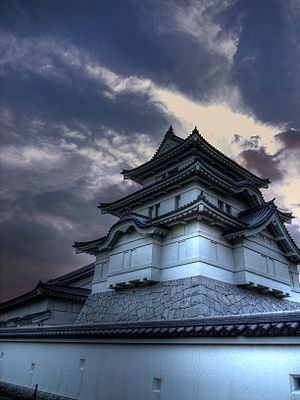Owner reconstructed 1995 Built by Matsudaira Yasumoto | Open tothe public yes Year built 1590 Demolished 1875 | |
 | ||
Similar Sekiyado‑jo Museum, Kururi Castle, Tateyama Castle, Sakasaijoato Park, Koga Castle | ||
Edogawa river and sekiyado castle
Sekiyado Castle (関宿城, Sekiyado-jō) is a Japanese castle located in Noda, northwestern Chiba Prefecture, Japan. At the end of the Edo period, Sekiyado Castle was home to the Kuse clan, daimyō of Sekiyado Domain.
Contents
- Edogawa river and sekiyado castle
- Mt fuji 125 km from sekiyado castle museum
- History
- Literature
- References
Mt fuji 125 km from sekiyado castle museum
History
Sekiyado is located at the confluence of the Tone River and the Edogawa River, and was thus a strategic location controlling river traffic in the northern Kantō region, as well as the northeastern approaches to Edo. A fortification was built on this location in the early Muromachi period by either Yadoya Mitsusuke (1395-1438) or Yadoya Shigesuke (d. 1512). It was destroyed during a campaign by the Late Hōjō clan of Odawara to conquer the Kantō region from 1565-1574.
After the Hōjō clan was destroyed in the Battle of Odawara, they were supplanted by Tokugawa Ieyasu, the castle was reconstructed by Matsudaira Yasumoto in 1590.
Under the Tokugawa Shogunate, the course of the Tone River was diverted in 1654 to prevent flooding in Edo. The new mouth of the Tone River was moved from Edo Bay to north of the Bōsō Peninsula, which greatly hindered river transportation. The daimyō of Sekiyado Domain, Itakura Shigetsune, took advantage of this situation to construct a canal joining the Tone River with the Edogawa River at Sekiyado, which greatly shortened the voyage and enhanced the revenues of his domain.
When the castle was reconstructed in 1671, the new donjon was constructed as a copy of the three-story Fujimi Yagura of Edo Castle.
With the Meiji Restoration, the new Meiji government ordered the destruction of all former feudal fortifications. The outer buildings of the castle had already been lost in a fire in 1870, and the remaining structures were abandoned in compliance with this directive in 1872, and pulled down by 1875.
The current donjon was reconstructed in 1995 to boost local tourism and to function as an annex to the local Sekiyado Castle Museum. However, the reconstructed buildings are not on the original foundations, nor are the buildings historically accurate, as they have been modeled on “typical” examples from other castles.
